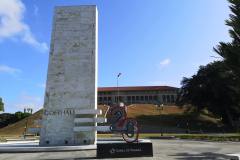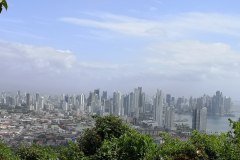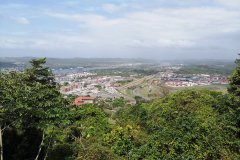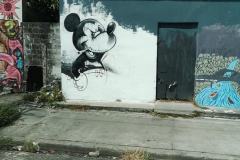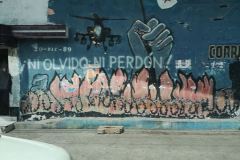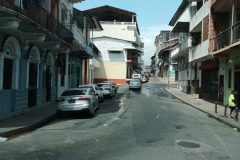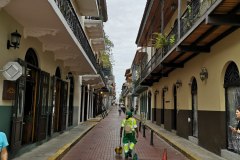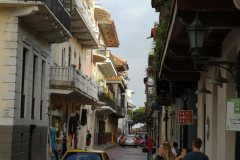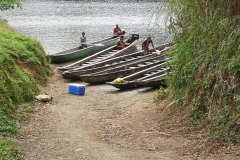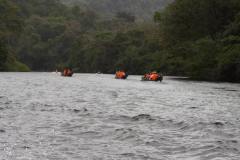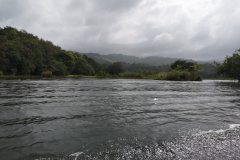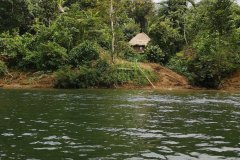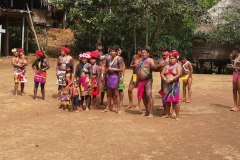The Darien Scheme, the Panama Canal, General Noriega, drug running, shady banking, and the Panama Papers. That was about the sum of my knowledge on Panama, and, of course, the Spaniards shipping all the gold from South America through Panama.
On our first day in Panama City we had signed up for a city tour. This included a Panamanian breakfast which was nothing special, but the tour improved after that. The Panama Canal Zone was ceded to the USA in 1903 and driving around Panama City it was very obvious where the zone had been; the administration area had nice buildings, and tree lined streets. Protests started in 1958, and the Zone was finally returned to Panama in 1979. Our guide took us to various sites where protestors had been killed; now there are wall murals and monuments marking the spots. We drove (and walked) to a hilltop to get views of the old and new Panama City. Then there was a thirty minute drive to see the 2metre wide cobbled track which was the link between the Pacific and the Caribbean. All of the South American gold had gone along this track as it was taken to Europe. We hopped back on the bus for a tour of the Old Town. On the way we passed General Noriega’s residence, now an empty plot, passed through a fairly rough area, and entered the Old Town. It was similar to Santa Marta, with many churches and balconies on buildings. The guide pointed out the newly-laid cobbles on the streets of the Old Town, “if you are walking and notice that it’s tar rather than cobbles, turn back quickly as you are not in a good area.” The drive back to the marina introduced us to Panama City’s evening traffic jams, with queues several kilometres long.
The next day we visited an Indian village. After a bus trip back across much of the isthmus, heading NE, we then boarded dugout canoes for a thirty minute journey up river. The canoes each took about a dozen people, with a large outboard on the back. Our guides were wearing loin cloths, but I did notice that the fishermen we passed were all wearing shorts and football jerseys.
The village was genuine, with huts built on stilts and tree frond roofs. There was also a large, communal hut where the villagers had laid out their handicrafts for sale. We had a question and answer session with the chief. All the women were bare-breasted, but the chief admitted that all the children attending the village school went there in trousers, white shirts, and ties, for the boys, and dresses for the girls. We had some tasty food, and dancing, before heading back. Our dugout needed baling for the whole journey back. Then it was on to the bus and another encounter with the evening traffic jam.
The next day was spent provisioning at the massive shopping mall; this was at least two or three times bigger than the largest Dubai shopping mall. On the way back (in the evening traffic jam) our taxi had a puncture. This meant emptying all our shopping out so that the driver could get at the spare wheel. As we had already been in the queue for about twenty minutes, and having lost another twenty minutes changing the tyre, our driver felt it was only right that we could regain our position by driving down the wrong side of the road. He earned his tip!
We got a message saying that the repairs to the mainsail had been delayed. We therefore decided that we would motorsail around the Las Perlas Islands for a few days, which would allow us to join the ARC party there, and then come back to Panama City. This would also help me with my departure a few days later.
Our evenings on the boat were spent listening to the “General Noriega playlist”. If you remember your history, the US Marines blasted the Vatican Embassy, where he had taken refuge, with tunes such as Born to Run, The Party’s Over, Wanted Dead or Alive… The full list can be found on the internet!
